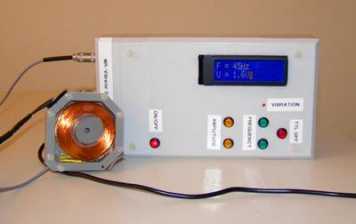MRI-Compatible Robotics
Functional Magnetic Resonance Imaging (fMRI) is a method to visualize and assess the function of the human brain. To do fMRI investigations during well controlled active or passive movements, robots are required to interact with the subjects. Hence, we aim to develop and apply robotic systems that perform defined movements and measure relevant parameters, while not disturbing the imaging process.
MARCOS
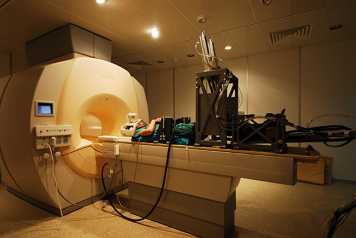
Our MAgnetic Resonance COmpatible Stepper (MARCOS) was developed as a tool for the investigation of the neural correlates underlying the control of lower limb movements (see publications listed below).
The knee and the foot of the subject were each connected to a pneumatic actuator (altered from standard FESTO cylinders). The position of the leg and external forces (e.g. to simulate ground reaction forces) were controlled by theses cylinders separately for each leg.
The system was equipped with optical encoders (position sensors) and resistive strain gauges (force sensors) at each cylinder. The sensors worked in the MR environment without disturbing or being disturbed by the scanner. Specifically designed head and trunk fixations prevented excessive head motion during the experiments.
A second device called MARCOS II was developed based on the first generation device and is currently applied for research at external page Cereneo, center for neurology & rehabilitation.
MARIA
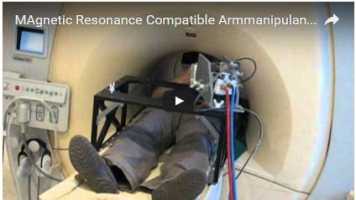
MARIA was directly mounted to the scanner bench. The control computer, hydraulic pump, electronic circuits, and other parts of the system (i.e. control valves and pressure sensors), were placed outside the scanner room. Optical fibers, cables and plastic hoses are used for signal and power transmission.
The system enabled the investigation of the cortical correlates involved in the dexterous sensory-motor control of the upper extremities.
MRI-Compatible 1-DOF Joystick
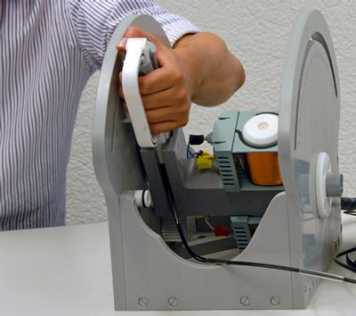
The MRI-compatible joystick was working with the same force generating principle. The resulting force was related to the strength of current, size of the coil, and placement and orientation of the device. In the fMRI experiments, the imaging data was only slightly affected. It was also observed that constant actuator currents yielded fewer disturbances to the functional MRI images than varying currents.
Hand Dynamometer
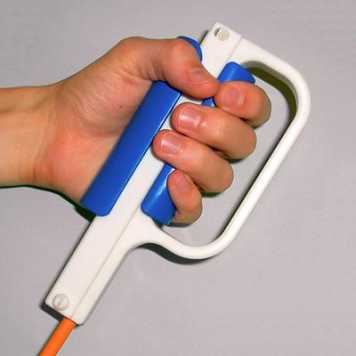
A high precision dynamometer was developed to measure hand grip forces inside the MR scanner. It was made out of plastic and was based on an optical measurement principle. It was used inside a 3 Tesla MRI scanner without causing image artifacts and functional deficiencies. It was easy to install into any experimental MRI or fMRI environment and could be synchronized with other recording processes.
We do not produce or sell this device anymore.
Contact
Dr. Peter WolfCollaborations
- external page Spinal Cord Injury Center, University Hospital Balgrist, Zurich
- external page Clinic for Neuroradiology, University Hospital Zurich, Zurich
- external page Professor Francisco Valero-Cuevas
- external page University of Southern California, Los Angeles
- external page Prof. Dr. med. Andreas Luft
